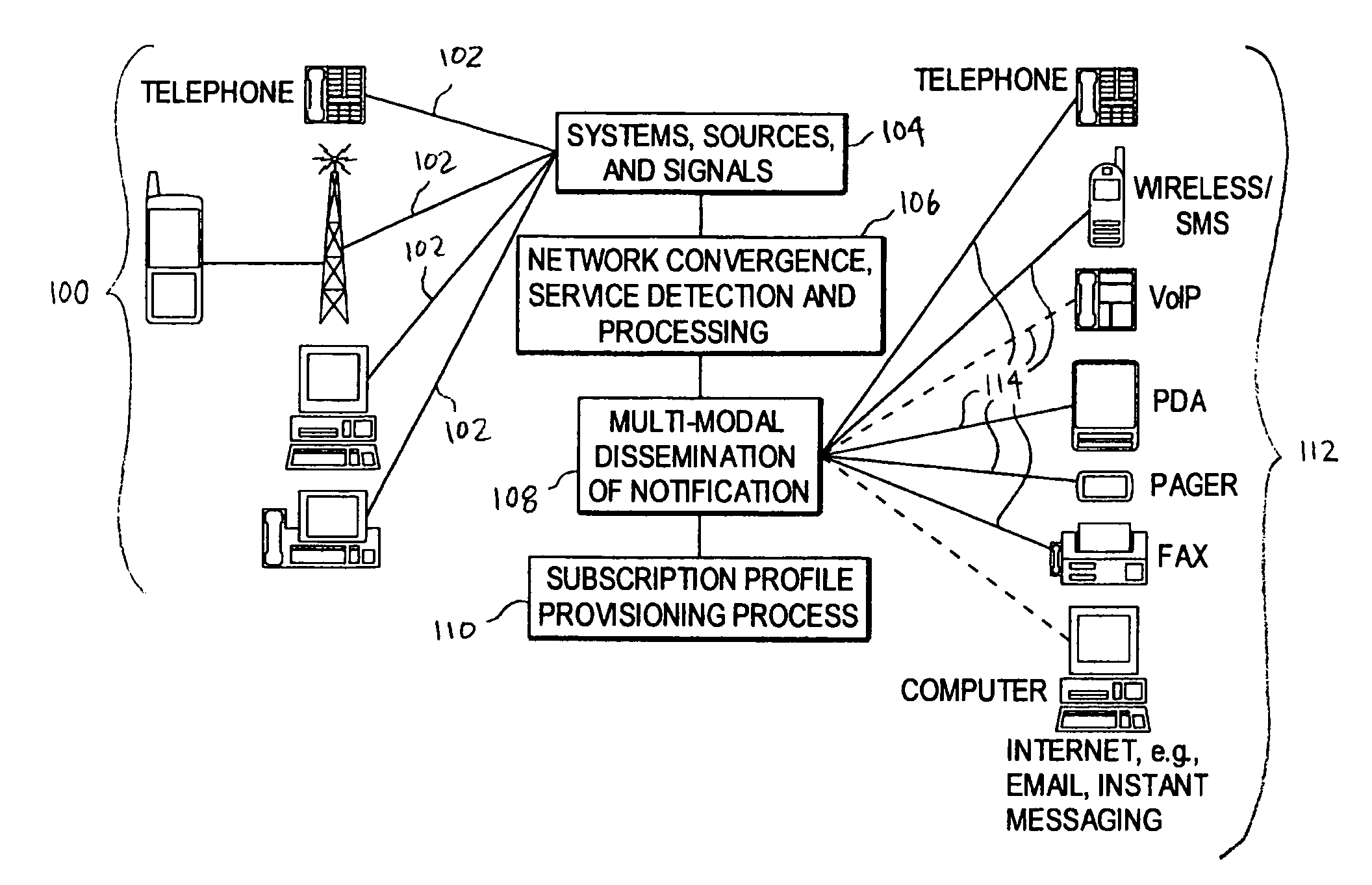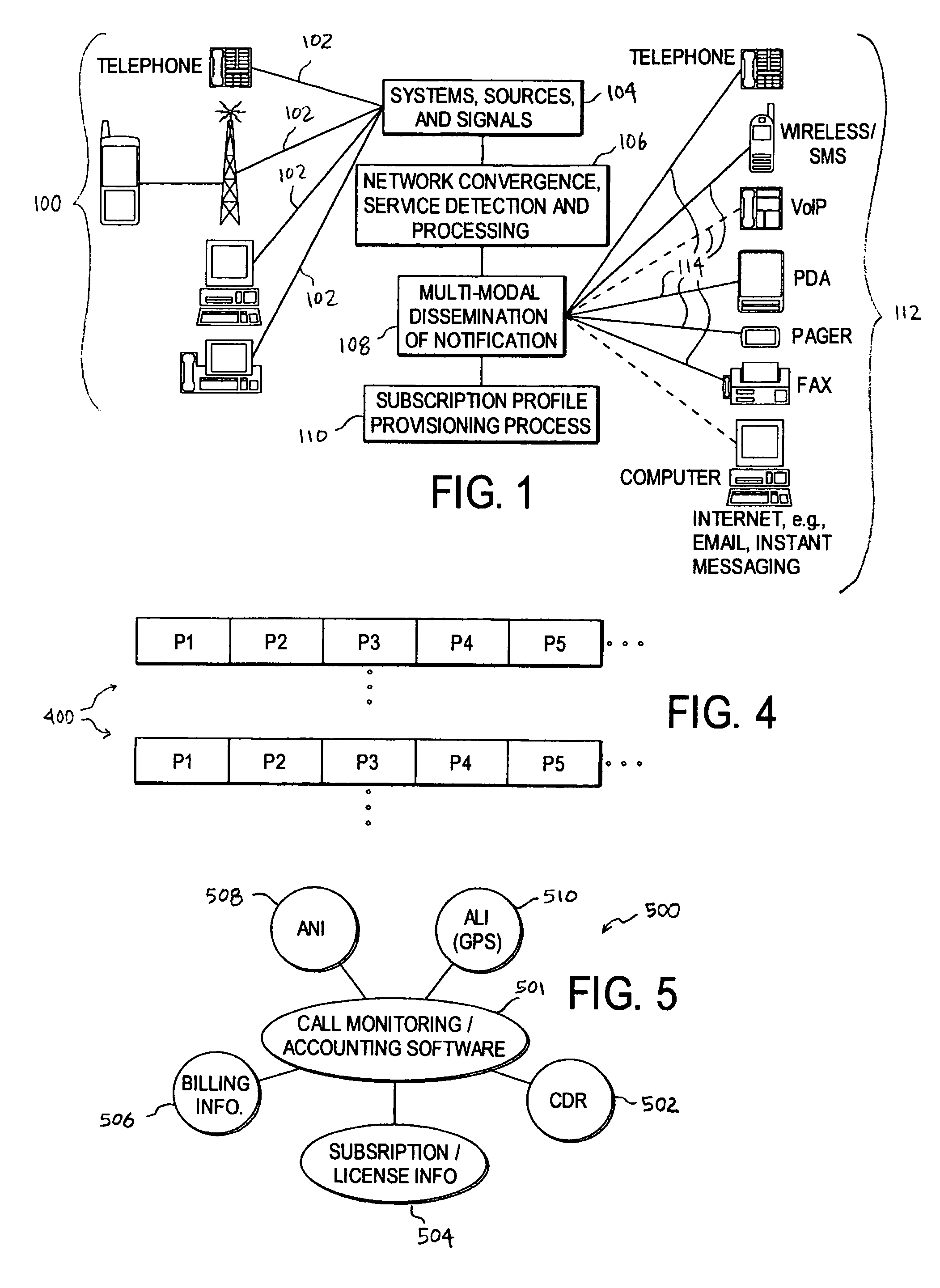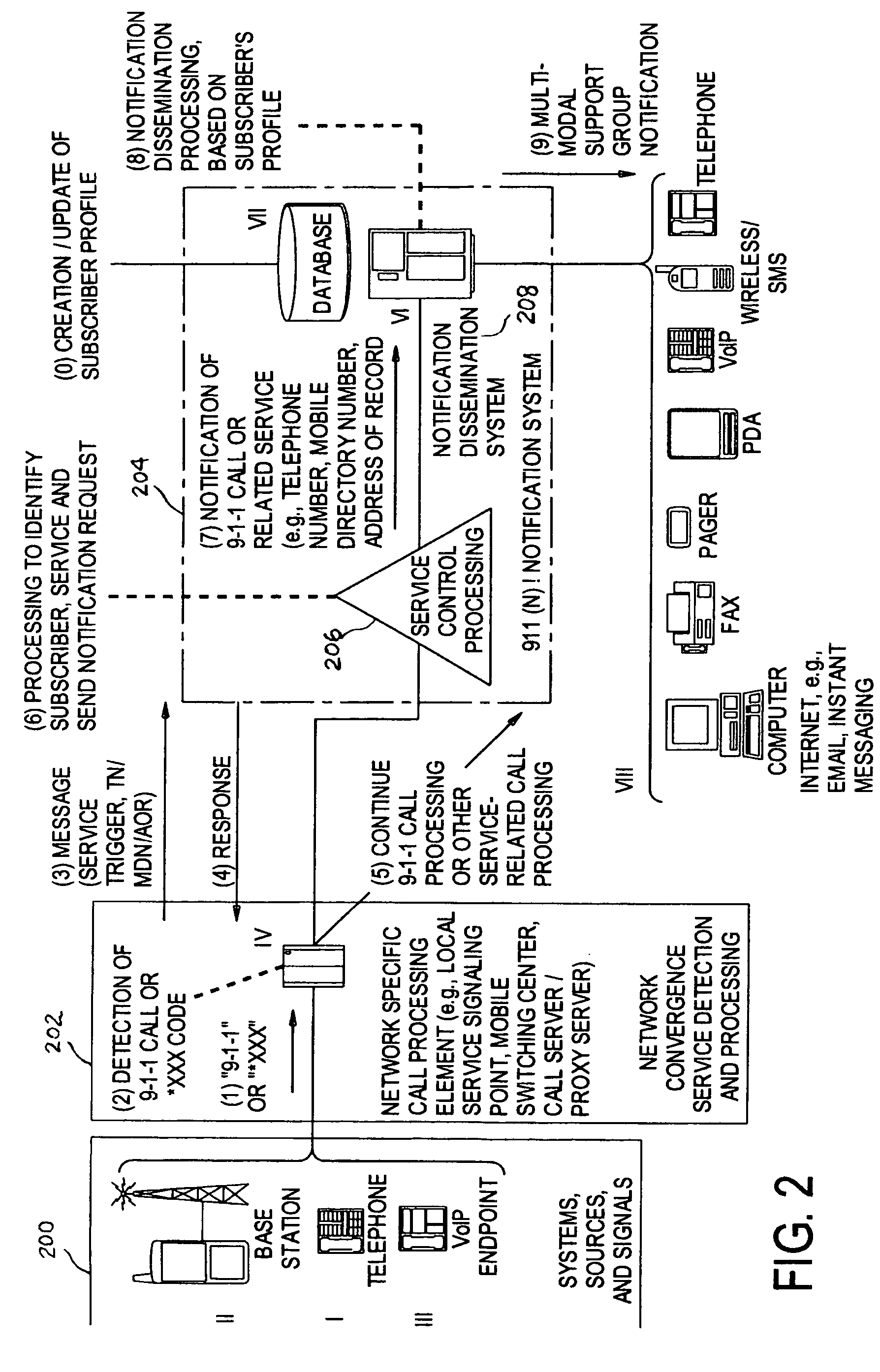As a result, services were not offered ubiquitously across an operator's serving area.
Also, once services were implemented, they were not easily modified to meet individual subscriber's requirements.
As a result, it took years to plan and to implement services.
That alertment protocol is less efficient than it could be, because the same person executing the protocol—the monitoring service—typically has to contact
emergency response personnel and well as the interested pre-selected or designated information recipients.
Similarly, problems arise when callers face difficulties during calls to emergency services, such as having to abandon the call for an even more emergent situation or through force or the
threat of force.
A significant problem with the Carrier et al. approach is in deciding which trunks to monitor, as monitoring all trunks would likely be cost prohibitive, and risking the possibility that some calls might be missed.
The most significant problem with Carrier et al. is that
trunk line class codes may have to be changed to monitor the trunks between the central office and the tandem, resulting in a requirement to modify the 911 infrastructure in order to implement the
system described.
That system, however, relies on human intervention to place a notification call, which is less efficient than a system that provides for the immediate, automatic calling of telephone numbers to notify parties that an emergency
telephone call was initiated.
In catastrophic situations such as natural or manmade disasters, PSAP personnel could be overwhelmed by the number of calls, and initiating notification calls could be delayed for considerable periods of time or quite possibly abandoned entirely—a situation that was essentially borne out in the beginning of the Katrina disaster and compounded by the destructive failure of the PSTN.
Additionally, while such private networks accomplish notification, they are expensive to install, require separate maintenance, and may require special maintenance.
One of the principal disadvantages to the Reich system, as highlighted elsewhere in the case of Carrier, is the requirement to alter the 911 infrastructure to effect a change in the ALI
database server so that it sends a message containing the
telephone number associated with the telephone making the 911 call to the computer system.
None of the systems, however, refer to an ability to identify the use of other discrete numbers of interest or have as a primary focus various ties to personal, family, or
community communication systems to provide for security.
Moreover, the aforementioned patents do not specifically address the issue of VoIP or addresses the issue of cancellation of the automatic notification, an alternate number for notification, a test circuit that could be used to test notify potential pre-selected or designated information recipients without actually initiating a 911
telephone call, non-switch / non-system related notification, multimodal notification through either stand-alone systems, an entirely hosted system, or a combination of independent and hosted systems, family emergency communication planning, or personal notification services.
Convergence of technologies, however, is not accomplished by acquiring a single box, according to the IEC.
Rather, those who intend to compete in the converged market space face significant challenges in choosing the correct equipment and
software, configured to provide them with the capabilities required to compete in today's Internet economy.
Investors, entrepreneurs, and existing vendors must appreciate the complexities of the convergence or risk the delays and unnecessary expense of adopting the wrong strategy.
At the current pace that technology changes, a company cannot afford to
commit exclusively to any particular proprietary or standard protocols.
Unfortunately, the general monitoring of the integrity of a switching system does not adequately identify problems in emergency calls.
Indeed, it is possible that a problem with all emergency calls through a switching system may go undetected where the majority of non-emergency telephone calls are successful.
This problem is exasperated by the fact that emergency telephone calls are often routed using dedicated resources.
Thus, a problem with a dedicated resource may cause all emergency calls to fail, while non-emergency calls, which do not rely on the faulty dedicated resource are completed without error.
Nonetheless,
system integrity monitoring may not alert an operator because the total failure of all emergency calls may not result in an error threshold sufficient to assert an alarm.
In all of the foregoing systems and methods, there are several shortfalls and problems with implementation that argue for a comprehensive system.
More importantly, the previous inventions do not address a multi-
modal manner of information distribution and do not address VoIP systems or combinations of existing and emerging systems, such as the combination of
wireless,
wireline, VoIP, and
hybrid systems.
In particular, the Sunil patents do not detail the functions and functionality of the AIN system, previously noted to have been developed and standardized by Telcordia Technologies.
The proliferation of automated notification systems has not been experienced within those systems because of difficulty with geo-location information.
 Login to View More
Login to View More  Login to View More
Login to View More 


